 |
 |
 |
| |
High-density Lipoprotein Particles but Not Low-density Lipoprotein Particles Predict Cardiovascular Disease Events in HIV Patients: Strategies for Management of ART Study
|
| |
| |
Reported by Jules Levin
CROI 2009 Montreal Feb 8-12
Daniel Duprez and INSIGHT/SMART Group
Univ of Minnesota, Minneapolis, US
Authors Concluded:
In the SMART study lower total HDL-p and especially small HDL-p are predictive for cardiovascular events in HIV patients.
Intermittent ART therapy (DC) is associated with a decrease in HDL-p concentration in comparison with continuous therapy (VS) after 1 month.
The long-term effects of ART on HDL-chol and particles and therapy to increase it need to be further studied in randomized trials in HIV patients.
From Jules: and in the next to last slide below you can see inflammation marker IL-6 was associated with CVD risk.
Background: Intermittent use of ART (DC group) was associated with an increased risk of serious cardiovascular disease (CVD) compared to continuous ART (VS group) in the SMART Study. We previously reported that high-density lipoprotein cholesterol (HDL-c) declined significantly more in DC than VS patients at 12 months and this unfavorable lipid change could offer a possible explanation for the increased risk of CVD. To explore this finding further, lipoprotein particle concentrations were measured in a random sample of DC and VS patients and for CVD cases and matched controls. Studies in the general population have shown that low density particles (LDL-p), particularly small LDL-p, and HDL-p predict CVD.
Methods: Lipoprotein particle concentrations were measured in stored plasma from a random sample of 451 patients by nuclear magnetic resonance at baseline and 1 month (218 DC and 233 VS). In addition, lipoprotein particles at baseline were measured in 249 cases of CVD through study closure on July 11, 2007 and in 494 controls matched for age, sex, country, and date of randomization odds ratios (OR) (upper vs lowest quartile) of HDL-p, LDL-p, and VLDL-p were estimated using conditional logistic regression with and without adjustment for baseline age, race, ART, HIV RNA, CD4+ count, smoking, prior CVD, diabetes, blood pressure and lipid-lowering drugs, body mass index, hepatitis B or C co-infection, ECG abnormalities, LDL-c (or HDL-c when studying LDL-p), and triglycerides.
Results: Average DC-VS differences for change after 1 month μmol/L were -2.3 (p <0.0001) for total HDL-p, -0.27 for large HDL-p (p = 0.19), -1.1 (p = 0.003) for medium HDL-p, and -1.0 (p = 0.02) for small HDL-p. Unadjusted OR of CVD were 0.40 (95%CI 0.26 to 0.63, p = <0.0001) for total HDL-p (lower values associated with increased risk), 0.66 (0.44 to 1.05, p = 0.08) for large HDL-p, 0.91 (0.60 to 1.38, p = 0.66) for medium HDL-p, and 0.53 (0.34 to 0.83, p = 0.005) for small HDL-p. Adjustment did not alter the strength of the HDL-p associations. VLDL-p and LDL-p concentrations were not significantly associated with CVD. Unadjusted and adjusted OR for small LDL-p were 1.38 (0.87 to 2.19, p = 0.17) and 1.09 (0.56 to 2.13, p = 0.79).
Conclusions: Treatment interruption has a rapid unfavorable effect on HDL particle concentrations. HDL-p in contrast to LDL-p concentrations were significantly related to risk of CVD independent of other risk factors.
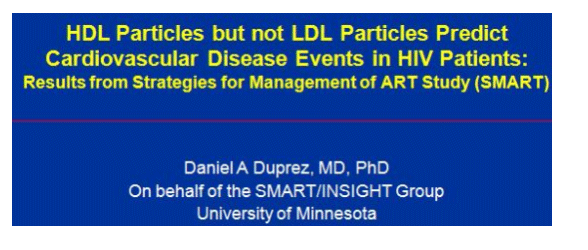
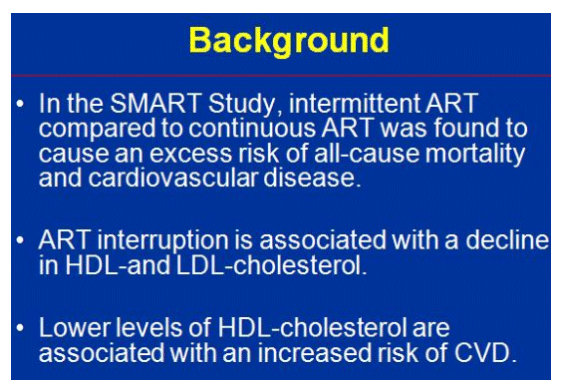
"Concentration of total HDL, LDL is different than looking to the particle size". For example in this case below these 2 patients had the same HDL-chol concentration but there was a difference in the large HDL-p and in the small HDL-p between the 2 patients
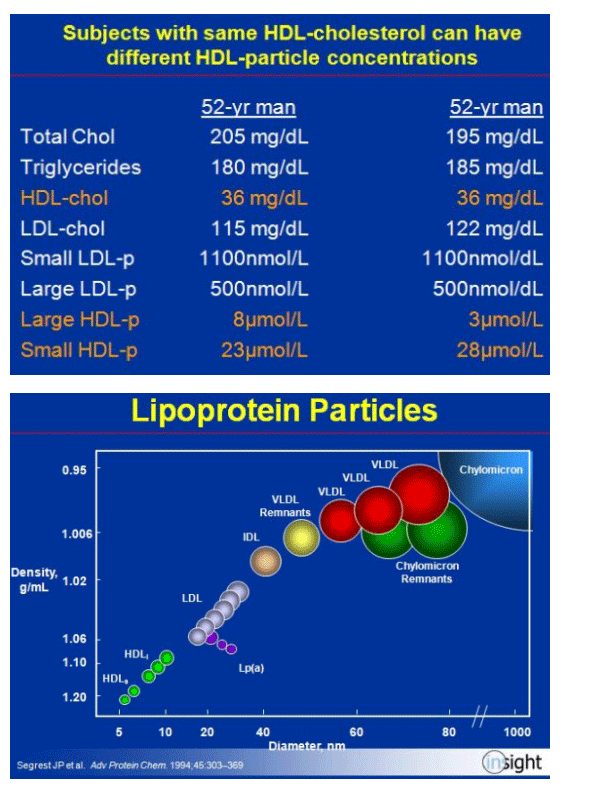
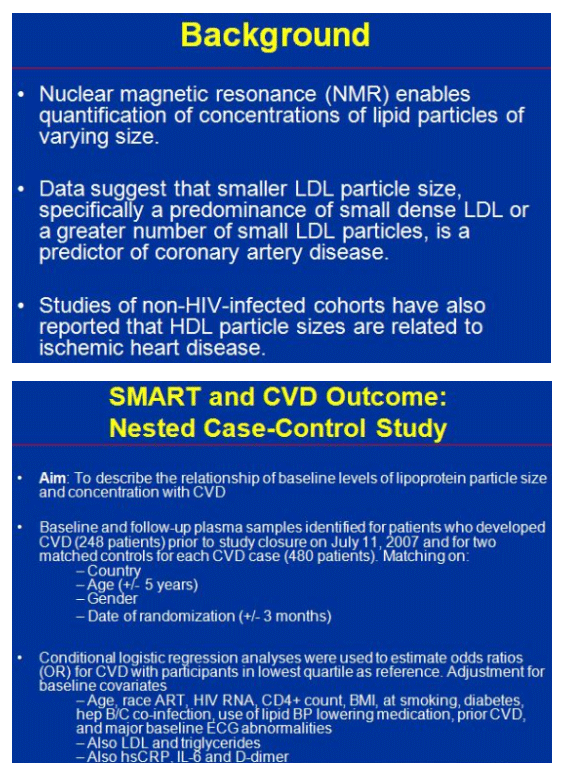
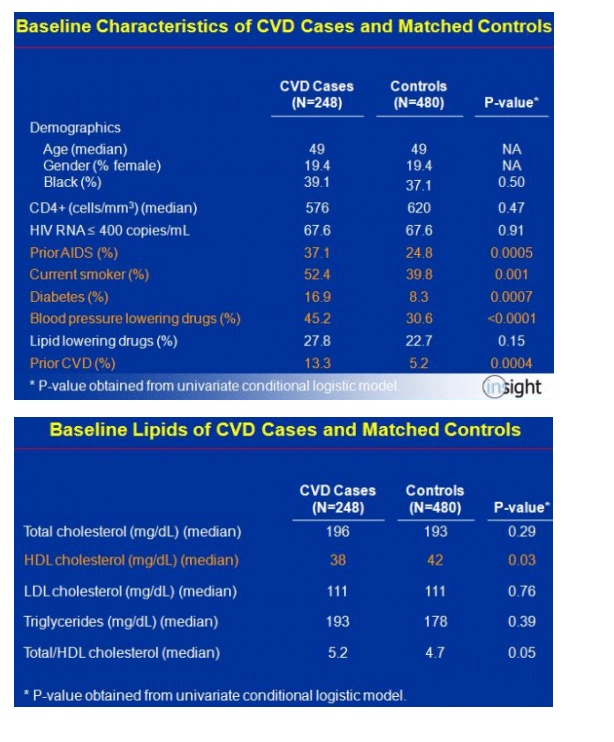
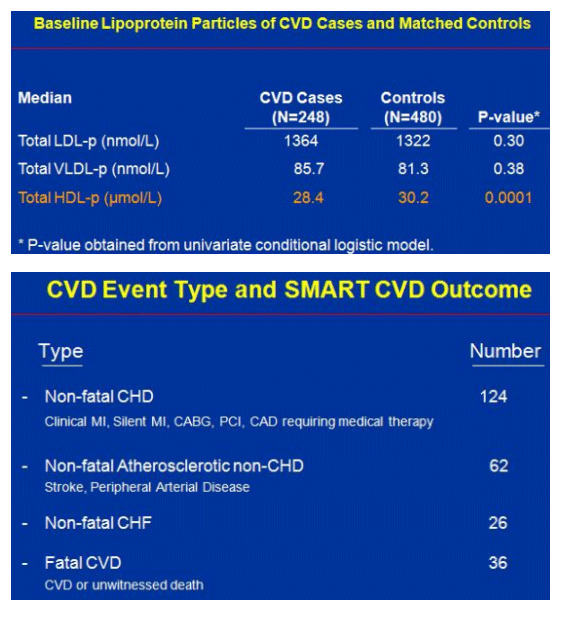
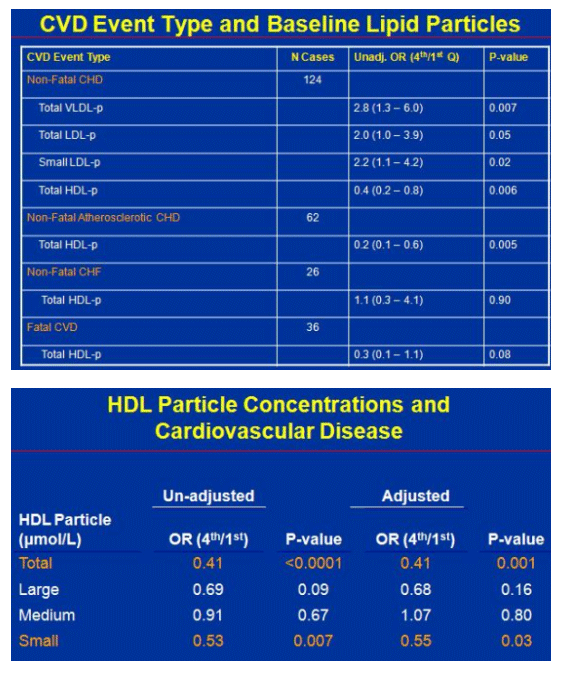
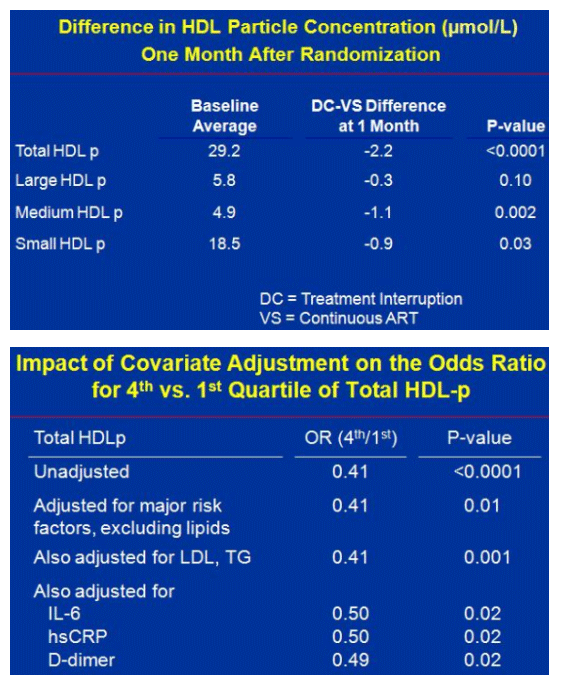
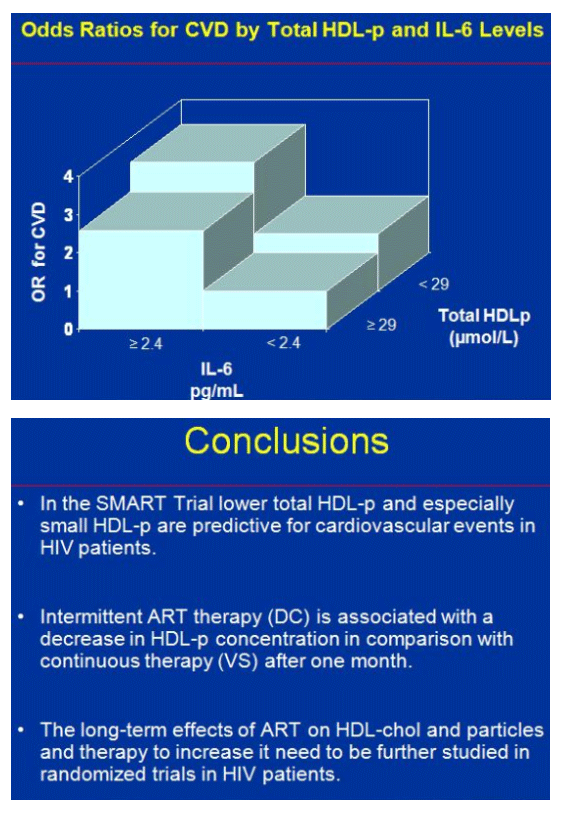
|
| |
|
 |
 |
|
|